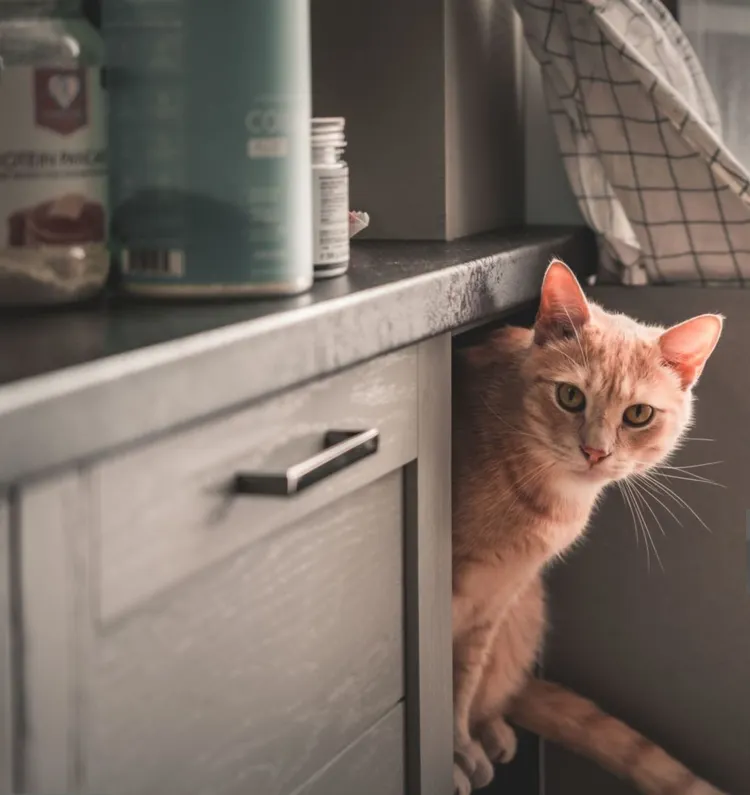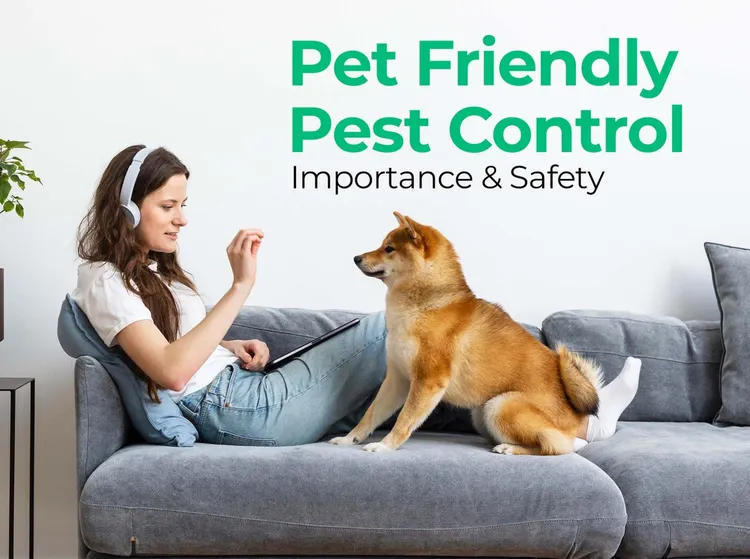When dealing with pest control in a home where pets are present, one of the primary concerns is whether the products used are safe for animals. Pet-friendly pest control is not only possible but also increasingly accessible, offering homeowners a safe way to eliminate pests without endangering their furry family members.
1. The Key is in the Placement
Even when non-pet-friendly chemicals are used, the placement of these products can make them safe for your pets. For example:
- Outdoor treatments often involve creating a barrier around your home. Once the product dries, it becomes safe for pets to move around the treated area. Since pets are unlikely to spend a lot of time near these barriers, the risks are minimal.
- Crack and crevice treatments: These involve applying pest control products in small cracks in walls or floors, areas your pets are unlikely to access. By applying chemicals in these hard-to-reach places, you reduce exposure to pets, keeping them safe while still effectively dealing with pests.
2. Mechanical vs. Chemical Solutions
If chemical solutions make you uneasy, consider diatomaceous earth. This natural product works by mechanically disrupting pests rather than chemically poisoning them. Diatomaceous earth is a fine powder composed of tiny, sharp particles that are harmless to humans and pets but deadly to insects. As pests crawl over it, the particles damage their exoskeletons, leading to dehydration and death. This method is non-toxic and poses no risk to your pets.
3. Traps and Baits
Another effective way to manage pests without exposing pets to harmful chemicals is the use of bait traps and glue traps. These traps can be placed in areas that are inaccessible to your pets, such as behind appliances or in small crevices, ensuring they do not come into contact with the bait.
For rodents or larger pests, some traps allow you to avoid using chemical poisons altogether. Electronic traps, for example, can kill pests without any toxic exposure.
4. Exclusion Methods: The Ultimate Pet-Safe Pest Control

Sealing off entry points into your home is one of the most effective and pet-safe methods of pest control. This process, known as exclusion, involves blocking gaps, holes, or cracks where pests might enter. For example:
- Weather stripping doors and windows
- Installing door sweeps
- Repairing broken window screens
These methods are not only non-toxic but also eco-friendly. By preventing pests from entering your home in the first place, you minimize the need for chemical treatments entirely.
5. Heat Treatments for Bed Bugs
If you’re dealing with a bed bug infestation, heat treatments are a powerful pet-safe option. These treatments involve raising the temperature in the affected rooms to a level that bed bugs cannot survive, without using any chemicals. Pets should not be in the room during the treatment, but once it’s done and the room has cooled, it’s perfectly safe for them to return.
6. Pet-Friendly Pest Control Products
Many manufacturers are now offering pet-friendly pest control products designed with animal safety in mind. Some popular pet-safe pest control options include:
- Neem oil: A natural insecticide that is safe for pets and effective against a wide range of pests.
- Essential oil sprays: These can be used to repel pests like mosquitoes, fleas, and ticks. However, it’s important to ensure the essential oils used are safe for pets, as some oils, like tea tree and peppermint, can be harmful to animals if ingested.
- Borax-based treatments: When applied in places inaccessible to pets, borax can be effective for insect control, particularly against ants and roaches.
7. The Importance of Hiring Professionals
If you’re unsure about handling pest control yourself, hiring a professional service can ensure that pet-safe methods are employed. Many pest control companies are familiar with the concerns of pet owners and offer tailored solutions that minimize risks.
Final Thoughts: Balancing Effectiveness and Safety
Pet-safe pest control can be just as effective as traditional methods when done correctly. By using non-toxic alternatives like diatomaceous earth, exclusion techniques, and targeted placements of treatments, you can protect both your home and your pets.
Want more pet-friendly tips for a healthier home? 🐾 Join our newsletter for eco-conscious advice that helps you and your pets live pest-free—without the toxic chemicals. We promise: it’s all treats, no tricks! Sign up now and become part of our eco-friendly pet community.



